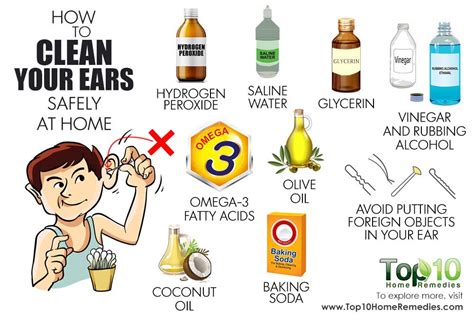How To Properly Clean Your Ears: A Guide to Healthy Hearing
Maintaining good ear hygiene is crucial for preventing infections and ensuring healthy hearing. Many people make mistakes when cleaning their ears, leading to potential problems. This guide will walk you through the proper techniques and what to avoid.
Understanding Your Ear's Self-Cleaning Mechanism
Before we dive into cleaning methods, it's important to understand that your ears are largely self-cleaning. Earwax, or cerumen, is naturally produced to trap dirt and debris. It usually migrates out of the ear canal on its own through chewing and jaw movement. Over-cleaning can actually disrupt this natural process, leading to complications.
What NOT To Do: Common Ear Cleaning Mistakes
Many people make these mistakes, which can damage your ears:
-
Using cotton swabs: This is perhaps the biggest culprit. While seemingly innocuous, cotton swabs push earwax further into the ear canal, potentially compacting it and causing impaction. This can lead to hearing loss, pain, and infection. Avoid cotton swabs at all costs!
-
Inserting other objects: Anything from hairpins to paper clips can damage the delicate skin of your ear canal and eardrum. Never insert anything smaller than your elbow into your ear.
-
Using ear candles: These are completely ineffective and potentially dangerous. There's no scientific evidence to support their use, and they pose a risk of burns and ear damage.
-
Over-cleaning: As mentioned, your ears are self-cleaning. Frequent attempts to clean them can irritate the ear canal and lead to dryness and itching.
How To Clean Your Ears Safely and Effectively
So, how should you clean your ears? The best approach is often the simplest:
-
Gentle External Cleaning: Use a warm, damp washcloth to gently wipe the outer ear and the visible parts of the ear canal. This removes any visible dirt or debris.
-
Ear Drops (When Necessary): If you experience excessive earwax buildup, consult a doctor or audiologist. They may recommend over-the-counter ear drops to soften the wax, allowing it to drain naturally. Never use ear drops without professional guidance.
-
Professional Cleaning: For stubborn earwax impaction, a doctor or audiologist can safely remove the wax using specialized tools. This is a much safer and more effective method than attempting to do it yourself.
Recognizing Signs of Earwax Buildup or Infection
It's important to be aware of symptoms that might indicate a problem:
- Hearing loss: A gradual or sudden decrease in hearing can be a sign of earwax buildup.
- Ear pain: Sharp or dull pain in the ear could be a sign of infection or impaction.
- Itching: Excessive itching in the ear can indicate irritation or infection.
- Discharge: Any drainage from the ear should be evaluated by a healthcare professional.
Conclusion: Prioritize Gentle Care for Healthy Ears
Proper ear cleaning is all about gentle care and recognizing when professional help is needed. Avoid the common mistakes listed above, and remember that your ears are largely self-cleaning. By following these simple guidelines, you can help maintain healthy ears and optimal hearing for years to come. Consult a healthcare professional if you have any concerns about your ear health.
